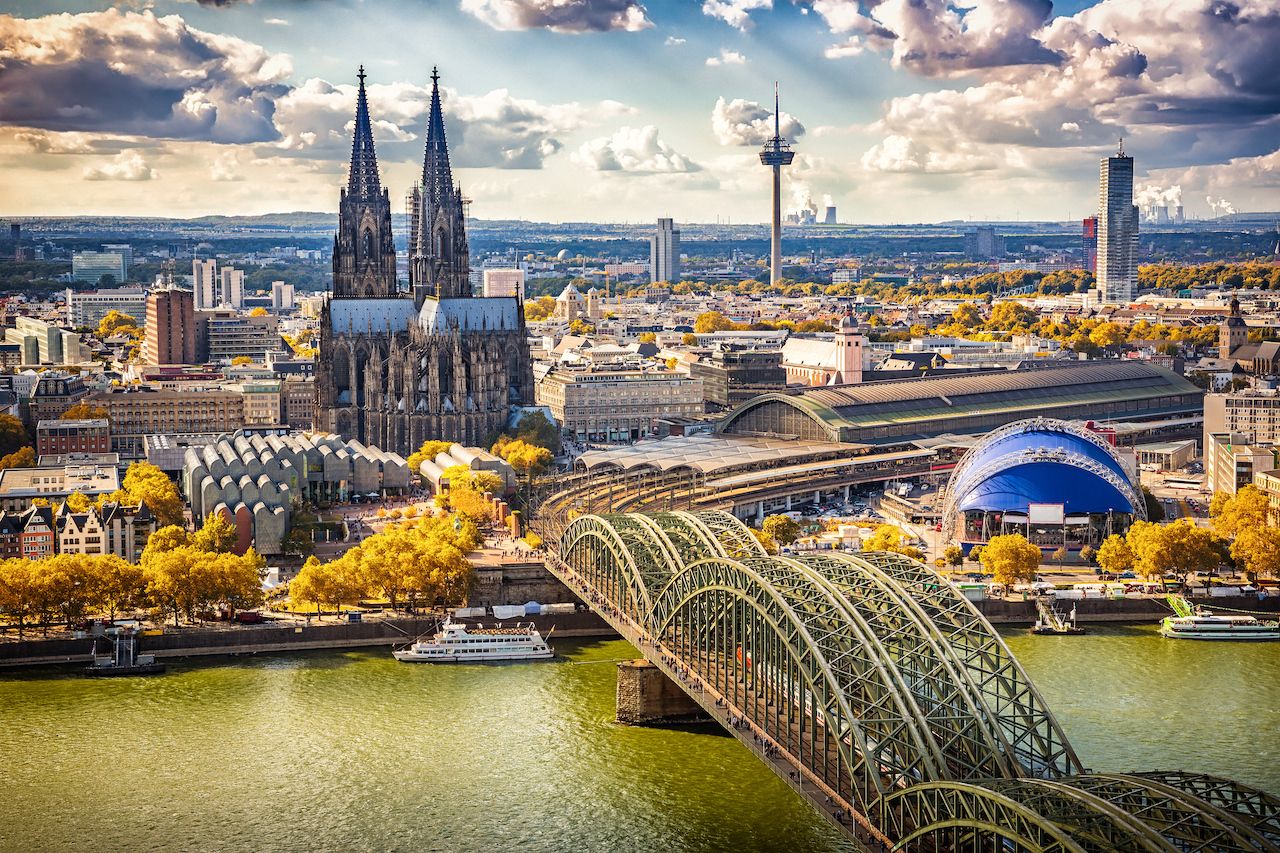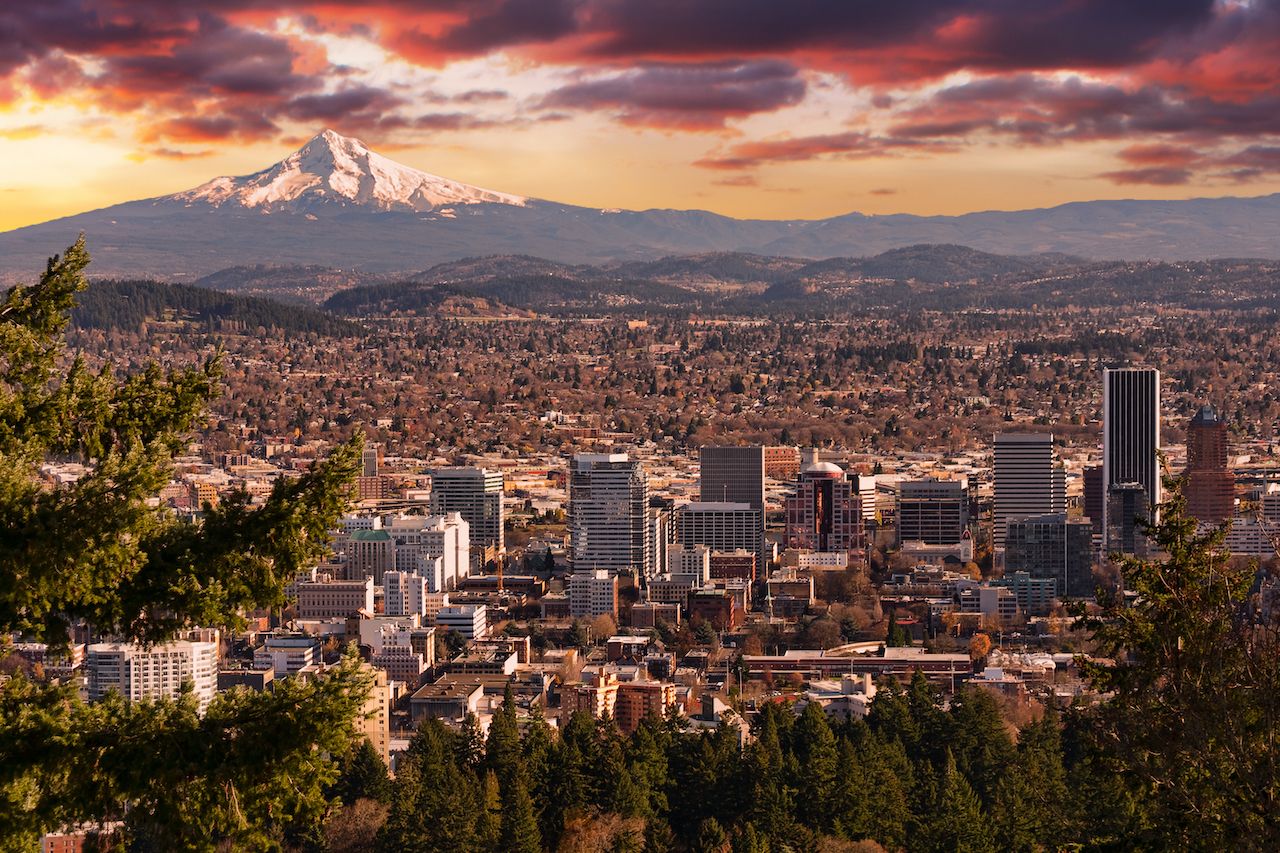Unless you planned to spend your whole time away from home lounging on the beach in your bikini, rain isn’t always the trip-ruiner it’s made out to be — some of the world’s most beautiful cities are drenched by rain for as many as 200 days a year. Far from spoiling your trip, rain can actually lend something special to a city’s atmosphere, like the famously gloomy Edinburgh or the damp Norwegian city of Bergen. Obsessively checking your weather app for rain might come second nature when planning a vacation, but this obsessive behavior might lead you to pass on some amazing destinations. Here are a few of the world’s wettest cities that you should visit despite the weather — just pack a solid raincoat and you’re good to go.


7 Rainy Cities Around the World You Should Visit Anyway
1. Bergen, Norway

Photo: Byelikova Oksana/Shutterstock
Due to its location on the southwestern coast of Norway, Bergen experiences some of the warmest temperatures in the country. There is a catch, however — you don’t get away with having a warm, mild climate in Scandinavia without some drawbacks. Bergen is called the “City of Rain” for good reason — the average annual rainfall is 88.58 inches. But the city fully embraces this identity, proudly selling apparel and souvenirs bearing the nickname.
Despite the rain, however, Bergen is still one of the coolest spots to visit in Europe. The small city is a gateway to Norway’s western fjord region, and has the charm of a small town but enough energy to keep you entertained. Mount Fløyen or Mount Ulriken are conveniently nearby, and you can either hike or take a funicular for amazing views of the city, fjord, and ocean.
You seriously won’t mind the rain when you’re strolling through the narrow alleyways along the historic Bryggen wharf, where much of the architecture, some of it very colorful, has been preserved since the Middle Ages.
2. Hilo, Hawaii

Photo: weicool/Shutterstock
The rain in Hilo is no joke. The city on the east side of the Big Island averages about 130 inches of rain every year. The good news, however, is that most of that rain comes at night, and shouldn’t interfere with your daily plans. And with trade winds that make the climate relatively temperate, Hilo is neither too hot nor too cold.
Even with the occasional heavy rainfall, Hilo needs to be on your list of Hawaiian destinations. Just a few miles north of the city you’ll find Akaka Falls, an impressive 422-foot waterfall that is among the most famous on the Big Island. If you don’t want to venture too far from the city, Rainbow Falls is located within Hilo itself, flowing over a lava cave that is said to be the home of Hawaiian goddess Hina. For a truly relaxing Hawaiian experience that doesn’t require any hiking, you can check out Coconut Island in Hilo Bay, which is perfect for swimming, picnics, or just lounging for the afternoon (until the evening rain comes, that is).
3. Cologne, Germany

Photo: S.Borisov/Shutterstock
Cologne is one of those cities with an aesthetic that is made even more dramatic and memorable with a bit of rain. Home to the largest Gothic church in northern Europe, the city sees an average of 200 days of rain per year, but the gloomy weather won’t put a damper on your vacation. Regardless of the weather, you can still visit the Chocolate Museum to learn everything you need to know about cacao and — your real reason for visiting — indulge in some free samples and check out the chocolate fountain. The Museum of Applied Arts is another great rainy day activity. Here you can stroll through collections of jewelry, furniture, weaponry, and architecture from the Middle Ages to the present, and truly forget about any inclement weather outside.
If you’re blessed with a sunny day, take the cable car across the Rhine River. In addition to providing you with great views, the six-minute ride will also bring you to the Rheinpark, one of the city’s most beautiful parks. You can also check out the Stadtgarten (or “city garden”), a multi-purpose indoor and outdoor venue with restaurants and cafes. It’s also home to a concert venue where you can catch local musicians.
If you happen to be visiting Cologne during the holiday season, you’ll be able to enjoy one of the best Christmas markets in the world. Starting in early December, Christmas arts and crafts, music, and decorations will grace the area around Cologne’s famous cathedral, as well as the heart of its Old Town. Just don’t visit if you’re on a diet, because the temptation of German Christmas chocolates will probably be too much for you to resist.
4. Portland, Oregon

Photo: Josemaria Toscano/Shutterstock
Seattle owns the reputation of one of the rainiest cities in the United States, but Portland, its southern neighbor, isn’t exactly the sunshine capital of the Pacific Northwest. It rains approximately 156 days per year there, which, if it were any other city, might be reason enough to skip it. Luckily, Portland packs a powerful punch when it comes to activities and attractions that make the rain a nonfactor.
Notorious for being a hipster haven, Portland isn’t just all about breweries. There’s also Distillery Row, featuring 12 local distilleries located in Southeast and Northwest Portland, in neighborhoods defined by their small warehouses and industrial buildings. Spend a rainy day buzzing on your favorite spirits and trying out new ones, and learn all there is to know about Portland’s thriving booze scene.
If you’re traveling with children, the Oaks Amusement Park is the perfect way to spend the day, rain or shine. The 44-acre park located just over three miles south of downtown is one of the oldest continuously operating amusement parks in the country, and includes classic carnival games, over 20 rides, picnic grounds, and an indoor skating rink. On sunny days — or if you enjoy a stroll in the rain — you can also check out Washington Park with its Japanese Garden, arboretum, picnic areas, tennis courts, and a forest for hiking.
And it wouldn’t be Portland if you didn’t partake in at least one trendy activity. In addition to grabbing drinks on one of the city’s many outdoor patios, like Radio Room, Aalto Lounge, and Rambler, you can easily pass a rainy day inside the quirky Powell’s Books in the Pearl District. Claiming to be the largest independent bookstore in the world, this Portland icon is truly a shrine to the written word, with over 68,000 square feet of floor space, nine color-coded rooms, and an attached coffee shop.
5. Rotterdam, Netherlands

Photo: gnoparus/Shutterstock
You might not beat the rain in Rotterdam, but you’ll certainly beat the crowds. Europe’s largest port, Rotterdam is a great alternative to the overcrowded Amsterdam, even if it does get an average of 33 inches of rain per year. But you won’t mind the gray skies once you immerse yourself in the city’s lively culture, maritime past, and unique architecture.
The target of German aerial bombings during World War II, Rotterdam’s buildings sustained heavy damage, and many had to be completely rebuilt. For that reason, Rotterdam feels more modern than Amsterdam, blending old and contemporary architectural styles to create a unique aesthetic.
The Markthal should probably be your first stop. Built in 2009, this eccentric marketplace has a semi-circular gray facade and a large windowed section that faces a massive courtyard. The interior features colorful artwork on the ceiling, depicting fruits, plants, insects, and flowers. The perfect rainy day activity, the Markthal houses many shops, restaurants, and bars. If you’re looking for traditional Dutch food and drink, this is the place to get it.
If you didn’t get quite enough food at the Markthal, visit the Fenix Food Factory. There, you have the opportunity to participate in workshops, tastings, and open markets, where you’ll be exposed to some of Rotterdam’s freshest local produce, as well as homebrewed beer and coffee.
6. Edinburgh, Scotland

Photo: f11photo/Shutterstock
When the sun comes out in Edinburgh, people tear off their shirts, grab a towel, and flock to Princes Street Gardens for an afternoon of sunbathing. It doesn’t matter if it’s 40 degrees or 70. Since the sun is so scarce in Edinburgh, people take advantage of the few nice days they can get their hands on, temperature be damned.
Edinburgh may feel like a city with a perpetual cloud hanging over it — it averages 191 rainy days a year — but there’s no city better equipped for its less-than-ideal weather situation. With architecture ranging from Gothic to Medieval to Georgian, Edinburgh fully leans into its gloomy aesthetic. The Old Town is pretty much entirely comprised of dour stone buildings, and the foreboding Edinburgh Castle is seemingly level with the clouds on its plateaued perch. If strolling through the old city streets in the rain doesn’t sound particularly magical, that’s only because you haven’t tried it.
Rain or shine, the best view of Edinburgh can be had from Calton Hill, just over the bridge in the New Town. You’ll have a perfect view of both the New Town and Old Town, Edinburgh Castle, and Arthur’s Seat — an 823-foot extinct volcano in Holyrood Park. For a bit of exercise you can hike to the top of Arthur’s Seat. There are multiple routes up the plateau, some more difficult than others, but climbing to the top is a rite of passage for anyone visiting Edinburgh. Once you reach the top, you’ll be rewarded with sweeping views of the North Sea.
Once you’ve made it back down to street level, you can do what’s likely been on your mind since the plane touched down — drink. You’ll find no shortage of watering holes, as seemingly every door in the Old Town leads to a small, dark pub. To get away from crowds, check out The Devil’s Advocate, tucked away in an alley off the Royal Mile. For a livelier atmosphere, hit up Biddy Mulligans in the Grassmarket district, which sits in the shadow of the castle.
7. New Orleans, Louisiana

Photo: Sean Pavone/Shutterstock
With an average annual rainfall of 64 inches, and a well-known flooding problem, there’s no doubt that New Orleans is a wet city. It gets the third-highest amount of total rainfall in the US, with 59 rainy days each year. But despite its weather woes, New Orleans has proven to be one of vacationers’ favorite travel destinations — and not just around Mardi Gras.
Of course, the French Quarter is a must-see for New Orleans newbies. Beyond the debauchery of Bourbon Street at night, the neighborhood is home to a unique cultural scene, with old streets, galleries, restaurants, and music clubs.
Make sure to check out St. Louis Cemetery No. 1. Since the ground in New Orleans is often saturated with water, the dead aren’t buried underground, but kept in mausoleums that house coffins. This eerie cemetery is unlike any other resting place, with massive stone mausoleums lined up like little houses in a spooky ghost town.
If the cemetery is too macabre for your taste, visit the neighborhood of Bywater for a dose of color. Even if it’s raining, the street murals around every corner will keep you in a sunny mood. And if that doesn’t do it, Bacchanal Wine — with live music, food, and fine wines — definitely will.